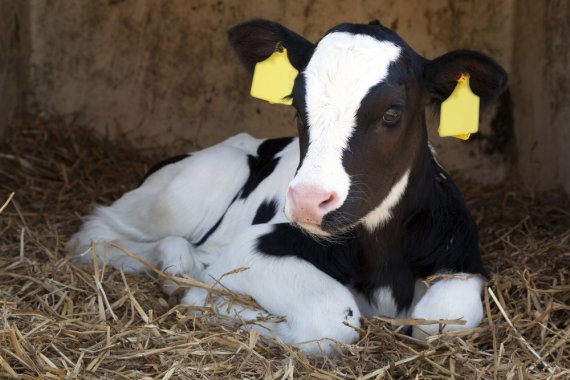Photo: Shutterstock
Managing the calving period is important for the health and survival of cows and their calves. Farmers currently use the expected calving date as a guideline to help determine when a cow will give birth. This is about 280 days after insemination, but it can vary between 267 and 295 days. Consequently, the farmer may find it difficult to determine when he has to keep a closer eye on the cow in question. ‘It is important for both the farmer and the animal to be able to predict the calving date as accurately as possible,’ said Claudia Kamphuis of Wageningen Livestock Research. ‘It’s handy for the farmer since he doesn’t need to check the cow so often, which is less stressful. And it’s important for the cow and her calf because action can quickly be taken if problems arise at the moment of birth.’
Sensor information
For this study, part of the Smart Dairy Farming 1.0 project with Wageningen Livestock Research as one of the partners, 400 cows at a Dutch dairy farm were followed for a period of one year. These cows had a chip that was attached to the electronic ear tag. “Farmers now often use this chip to determine when a cow is in estrus, that is willing to mate,’ Claudia explained. ‘We wanted to see if the information from this chip could also be used to predict the calving date more accurately.’
The sensor collects information about activity, eating behaviour, rumination and temperature and it registers this data hourly. The researchers examined the extent to which this information was usefully in determining the moment of calving. The cows were also filmed to see when the exact moment of calving began.
Better predictions
They then developed two models: one based only on the expected calving date and one that included the sensor information. Only a 1% false alarm rate was accepted for both models. ’If a farmer has to keep getting out of bed for nothing, the system has no extra value at all,’ stated Niels Rutten of the Faculty of Veterinary Medicine in Utrecht. The first model predicted the correct calving date for only 1 out of 10 cows. When the sensor information was added, the rate increased to 1 out of 3. .
It is important to predict the moment of calving as precisely as possible so that action can be taken if problems arise.
The researchers then tried to see if they could use this information to determine the exact moment of calving. Three hours prior to the actual calving, the model with sensor information gave a sign for slightly less than half of the cows; an hour prior to calving, about 1 out of 5 cows was correctly selected. In most cases it was not possible to determine the exact hour when calving would begin. However, the start of calving could be more accurately determined using the sensor information rather than the expected calving date. And it appeared that most of the signals were given in the final 12 hours before calving. Claudia: ‘If the farmer uses this model, then he knows that he has to keep a close eye on the cow during that period.’
Is the developed model commercially interesting? Niels: ‘In the framework of animal welfare, it certainly has added value, but it has to be financially feasible for a farmer.’ The researchers have thus chosen to use information from an existing sensor rather than develop a new calving detector. For just a small extra investment, a farmer could upgrade so that the sensor is suitable for detecting estrus as well as calving.

